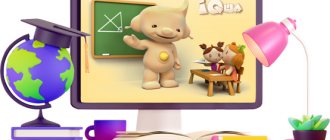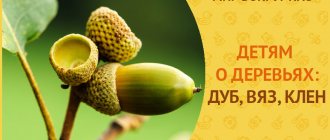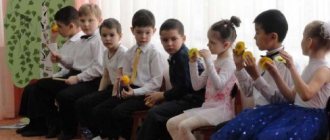Developing a child’s logical thinking is just as necessary as teaching new things, because knowledge is only tools, and logic is the ability to use them. Logic will teach you to analyze problems and situations, find and apply non-standard solutions. Such skills will be useful both in kindergarten and school, and in everyday life. There are many different exercises to develop logical thinking. But if your little one is tired of regular puzzles, offer him some fun math puzzles.
What are math puzzles?
These are entertaining tasks with game elements. Such tasks do not require deep mathematical knowledge and special training; rather, you will need intelligence and observation.
There are a lot of math puzzles. These include logical puzzles, problems with numbers and pictures, paradoxes and probabilities, and much more. They can be simple, which the child can easily cope with on his own, or complex, when he needs the help of his parents.
Development and education of children from 2 to 11 years old in a playful way
Start practicing right now
Start practicing
Examples in pictures
Examples in pictures are suitable for beginner mathematicians. A visual image will help the child better see the cause-and-effect relationship of changes in quantity.
Download worksheets for solving addition and subtraction examples.
You will find even more examples for preschoolers in the section Adding and Subtracting
Perform developmental exercises from Ikyusha
Mathematics
Reading
The world
Logics
English language
Puzzle “Card, please”
Look carefully at the credit card numbers. What three numbers should be written in place of the question? Already have any guesses?
We hope you completed the task quickly! And the next puzzle is already waiting for you.
Puzzle “Chairs”
The teacher asked the students to arrange 9 chairs along the four walls of the classroom so that each wall had three chairs. The students completed the task. Can you?
Puzzle “House number”
Hardworking builder Evgeniy arrived on site earlier than the others, but forgot the house number! We know that the house is located between plots 88 and 98. Can you help Evgeniy and tell him the number?
Bullseye Puzzle
Do you like to watch archery competitions? It's so exciting! Look, both archers have already performed, let's count how much archer B scored? We know that shooter A scored 54 points, and points are earned proportionally from the end: 1, 2, 3...
Puzzle “Mom and Daughter”
In this task you need to guess the ages of the mother and daughter. We know that if you add up their ages, you get the number 66. And if you swap the numbers of the mother’s age, you get the exact age of the daughter. Moreover, the mother is no older than 59, and the daughter is no younger than 7. Guess how old they are?
Puzzle “Hurray, fireworks!”
Look how beautiful the fireworks are! And not just one, but six! But one of them was not launched, determine which one?
Puzzle “Mathematics”
The task is simple - fill out each line and column so as to get the specified result at the end. You can only use numbers from 1 to 9 so that there are no repetitions in each line.
Puzzle “Wise Old Man”
The father of three sons made a will so that after his death the children would divide their father's herd of camels like this: the eldest son would take half, the middle son only a third, and the youngest son would get only a ninth. The father died, leaving a herd of 17 camels. Unable to divide the animals, the children asked the wise old man to help them. The elder agreed and, arriving on his camel, divided the animals according to his will. How did he do it?
This puzzle is a variation of Italian mathematician Niccolò Tartaglia's famous "Difficult Inheritance" problem. He went down in history as the scientist who discovered the solution to cubic equations.
Puzzle “Counting fruits”
Where else if not in a store to train counting skills? Let's buy 2 sweet aromatic oranges? How many coins will you need to pay for them? Look at the picture and count.
Entertaining material for teaching elementary mathematics to preschoolers in the senior group
Elena Rodkina
Entertaining material for teaching elementary mathematics to preschoolers in the senior group
Teacher of MBDOU No. 79 Tomsk Rodkina Elena Aleksandrovna.
I noticed that ingenuity, puzzles, and entertaining games arouse great interest among the guys in my group . Children can, without being distracted, practice for a long time counting objects, transforming figures, rearranging sticks or other objects according to a pattern, according to their own design. In such activities, important qualities of the child’s personality are formed: independence, observation, resourcefulness, quick wits, perseverance is developed, and constructive skills are developed. skills.
Entertaining math games allow you to:
1. cover the widest possible range of mental processes, ranging from such relatively simple ones as spatial perception to more complex ones (imagination, mental analysis, comparison, inference, etc.)
2. stimulating the development of mathematical abilities .
3. development of the ability to observe and compare, contrast and
analyze.
4. develop constructive thinking
5. promote the development of fine motor skills, thereby stimulating the development of the child’s speech and intelligence.
In classes on the formation of elementary mathematical concepts, such material is included in the course of the lesson itself or used at the end of it.
Outside of school hours, entertaining mathematical games, along with others, can be used to organize children’s independent activities based on their interest.
Math games
1 “Guess the number” (for older preschoolers )
Goal: Consolidation of knowledge of the number series. Strengthening children's ability to compare numbers.
According to the task, the child must name a number that is less than or greater than a certain number, the “neighbors” of the number. What number is between the numbers?
2 "Geometric mosaic"
,
“Make a picture” (Picture from geometric shapes)
Purpose: Consolidate ideas about geometric shapes.
Objectives: To develop the ability to sort geometric shapes into groups according to qualitative characteristics. Develop attention, logical thinking, fine motor skills. Foster interest in mathematical development .
3 "Number series"
The purpose of this task is to consolidate knowledge of the sequence of numbers in the natural series.
4 Mathematical entertainment - various tasks, games - “Tantram”, “Pythagoras” puzzle, “Columbus Egg”, “Magic Circle”, “Vietnamese Game”.
5 Labyrinths, to solve which you need to solve a practical problem: help a squirrel find its hollow, a girl get out of the forest, feed animals, etc.
Goal: To develop in children perseverance and the ability to concentrate, logical thinking, and dexterity.
6 “Arrange the circles”
Goal: to develop logical thinking, imagination, attention, fine motor skills. The circles need to be placed in a certain order, following the assignment. For example: arrange the circles so that the blue circle is to the right of the red one, and the small yellow circle is to the left of the blue one, etc.
7 “Make a figure from sticks” (games with counting sticks)
Goal: The ability to rearrange sticks to create geometric shapes and images.
Objectives: To develop the ability to achieve the desired result. Develop logical thinking, imagination, memory. To develop the ability to use acquired knowledge in independent activities.
8 “Sticks (strips)
Cuisenaire" Colored Cuisenaire counting sticks are used to develop children's
mathematical abilities and prepare for mathematics lessons at school.
Purpose: to consolidate, with the help of Cuisenaire sticks, the composition of numbers, counting, and to consolidate the number series.
9 Logic problems to find missing figures (Find the ninth)
From the figures, choose the one that can be placed instead of a question mark.
The purpose of such tasks is to arouse interest in solving a problem through visual and mental analysis of rows of figures horizontally and vertically.
10 “Count and put the number”, “Count and answer”
Goal: To teach children quantitative calculation, to teach them to correlate the number of objects with a number.
11 "Dyenes Blocks"
Goal: Development of sensory and sign culture.
Objectives: Development of ideas about the properties of objects (blocks)
– shape, size, color, thickness.
To form an understanding of connections and relationships in the natural series of numbers. To develop logical operations: comparison, seriation, classification. Foster interest in mathematical development .
12 Nikitin’s cubes B. P. “Steps of creativity, or educational games”
Goal: To promote children's mastery of elementary modeling .
Objectives: Consolidate knowledge of colors, shapes, develop the ability to combine objects. Formation of the ability to classify figures by shape and color. Develop the ability to find your own solution.
Examples within 10
Gradually, the child will be better and better at calculating within 10. To learn how to “crack” examples like nuts, you need to solve a lot. But simply solving the same type of examples is boring. Math should be interesting!
So that your child can practice writing examples at any time, we have come up with ready-made tasks for you. Just download, print and get started!





